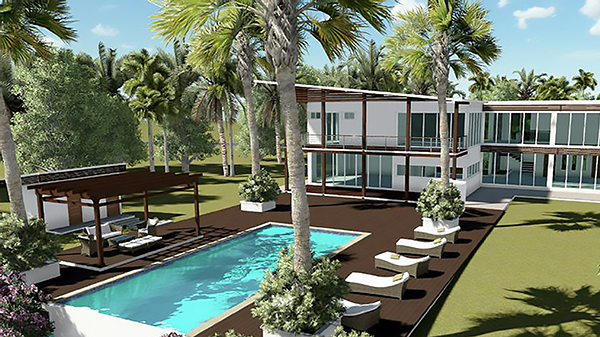In one of the hottest real estate markets in the country, Tampa, FL, my wife Gloria Kloter and I launched Glow Architects. With her background as an award-winning architect, being in the industry since 2004, and having a variety of exposure to different design styles, we were poised to take a new investing angle in our community. But we’d heard it time and time again, “The market is competitive, deals are scarce, and profits are being squeezed. As investors how can we continue to compete?” I didn’t realize it at the time, but marrying an architect turned into the perfect marriage of skills for my real estate investment business.
My background in business and operating a real estate brokerage with 50+ agents, a property management company that assists investors with single-home or multifamily buildings, and a 506b Reg D real estate investment fund, I had built a solid network of investors. The demand to do new construction in the residential space has been booming as investors have found the fix-and-flip market flooded with those who target the typical single-family flip. We have noticed a shift in savvy, well-capitalized investors target new-builds to keep money moving. Whether developing lots or tearing down an existing structure to rebuild, we see this strategy as a viable option. Not only are there fewer investors doing it, but as the housing inventory continues to decrease through the resale market and with local builders, the private investor can make a solid return if the strategy is implemented correctly.
We have also seen a shift in institutional investors looking for new construction to buy and rent out, a model not typically seen at scale before. There is also a lack of those willing to provide this product to the market and we have been able to offer services to investors utilizing the architecture license my wife has to get in on the action.
There is also a high volume of activity around fix and flips, so as a design firm we are always looking for new ways to have more functional layouts with well thought out designs to help investors create a buzz around renovated properties coming to market, not only building the individual investor’s brand but offering a sought after, quality renovation that is targeted at likely demographics. This may also include changing a two-bedroom, one bathroom home into a three-bedroom, two-bath either through rearranging the layout or through an addition, often finding value where other investors are only considering a typical remodel of the current setup.
These same design skills can apply in the multifamily space whether it is changing the exterior facade of a building or altering amenities to compete with neighboring properties. The mindset behind how our design process works as investors plays a big role in how we offer a new style of architecture and interior design to those we work with. As an example, we have had discussions with a developer who has approval for 28 units nearby through a mixture of quadplexes and duplexes. They contacted me for property management once it is built, but as I reviewed the plans by their current architecture firm, I was able to recognize how the unit layouts could be more functional and advised them on the right unit mix of bedrooms and bathrooms and ways the property could feel more like a community.
Investors should seek the skills of architects due to the license needed to accomplish certain strategies and their education differs wildly from engineers, contractors, and other consultants. Although, not all architects understand design intent, interior design, and the importance of an investor’s strategy, so ask around your local investor circles to see if any investors currently work with an architect. With the variety of asset classes and skills, ensure the architect you choose has experience in the type of projects you are looking to do.
Finding the right power team to work with when it comes to architects and interior designers can aid investors in making smarter decisions, saving construction costs, building a better product for the end user, and avoiding delays. If a property is better designed, it translates to a faster resale if it’s a fix and flip. If a unit has the right setup, it will lease faster, decreasing the vacancy turnover process and raising the likeliness of lease renewals, which improves the cashflow over time.
Jeremy Kloter, A Marine Corps Veteran turned Broker, was raised in the Tampa Bay Area. Jeremy is Co-Founder of Glow Architects, an award-winning design firm. His other business ventures include being the Co-Founder in a real estate investment fund (506B, Reg. D), a real estate brokerage, and a property management company.
























0 Comments